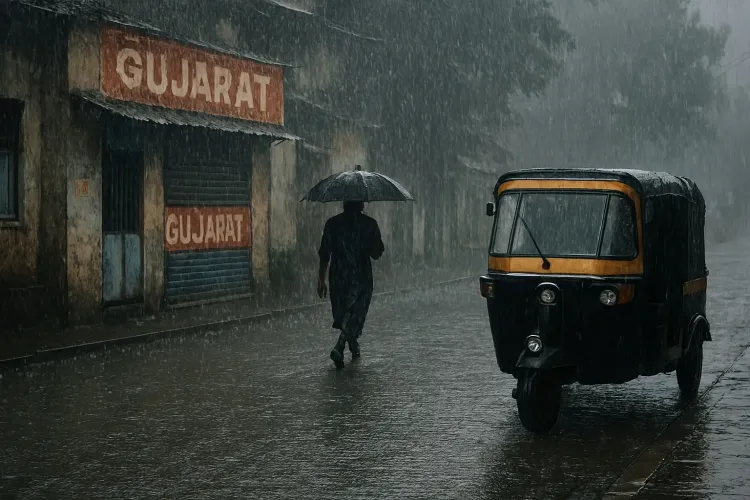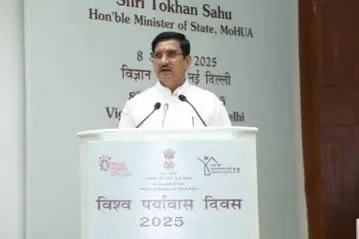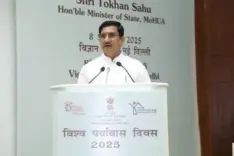Gujarat's Rainfall: Has the Southern Region Exceeded Expectations?

Synopsis
Key Takeaways
- Gujarat received over 64% of its average rainfall as of August 11, 2025.
- The Southern region is leading with 68.79% rainfall.
- 52 dams are on high alert, indicating healthy water levels.
- 82.35% of the targeted kharif area is already cultivated.
- The Sardar Sarovar Dam holds over 75% of its capacity.
Ahmedabad, Aug 11 (NationPress) As of August 11, 2025, Gujarat has experienced over 64 percent of its average seasonal rainfall, with the Southern region achieving the highest recorded rainfall at 68.79 percent.
Data from the State Emergency Operation Centre (SEOC) in Gandhinagar indicates that East-Central Gujarat has seen 66.54 percent, North Gujarat 66.21 percent, Kutch 65.13 percent, and Saurashtra 56.31 percent rainfall.
The extensive monsoon rains have notably enhanced the water levels in reservoirs throughout the state. Out of 206 dams (excluding Sardar Sarovar), 52 are currently on high alert, holding between 70 percent and 100 percent of their storage capacity.
The Sardar Sarovar Dam, deemed the lifeblood of Gujarat, now contains over 75 percent of its total storage capacity. The rainfall has also expedited kharif sowing, with 82.35 percent of the intended area already cultivated.
According to the Agriculture Department, peanuts are leading with 20 lakh hectares under cultivation, followed by soybeans at 2.65 lakh hectares and maize at 2.64 lakh hectares.
In the meantime, the India Meteorological Department (IMD) has warned fishermen in Gujarat to refrain from venturing into the sea from August 11 to 14 due to turbulent conditions.
Despite the heavy rains, electricity supply remains stable across all villages in the state, and all 14,598 State Transport bus routes, covering 40,264 daily trips, are functioning as per schedule.
This ongoing monsoon has resulted in significant inflows to Gujarat’s dams and reservoirs. As of August 11, 2025, aside from the Sardar Sarovar Dam, the state’s 206 major reservoirs are exhibiting healthy water levels, with 52 of them on high alert, maintaining between 70 percent and 100 percent of their storage capacity.
Additionally, 25 dams are currently on alert, and 26 are at warning level.
The Sardar Sarovar Dam, recognized as the state’s vital resource, now retains over 75 percent of its designed capacity, ensuring sufficient water supply for drinking, irrigation, and industrial uses in the months ahead.
These increasing water levels are a direct consequence of the widespread and above-average monsoon rains recorded this season, especially in the southern and eastern regions of Gujarat, which have contributed significantly to catchment inflows.









